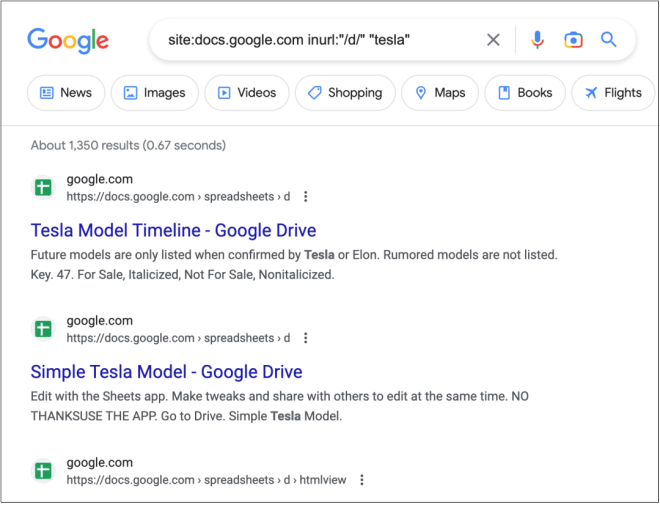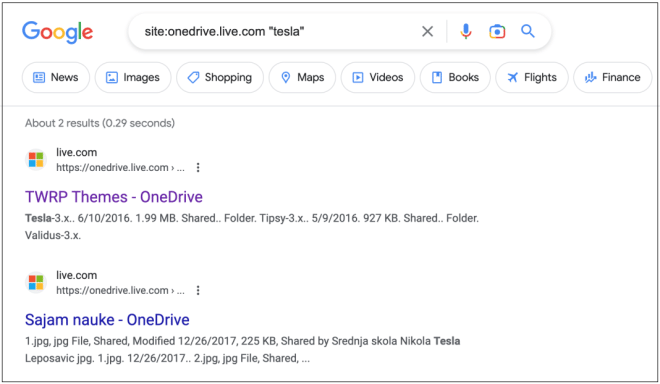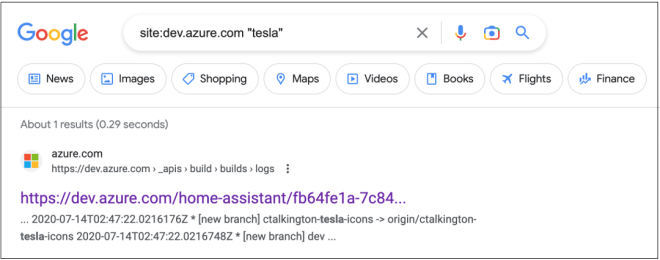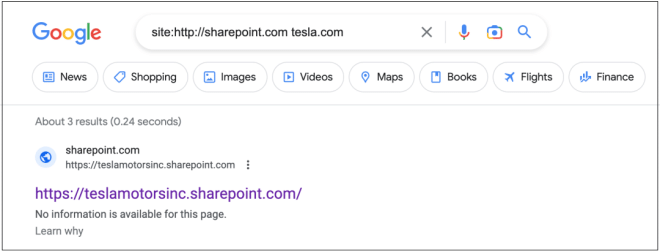How to find sensitive data with Google Dork?
Google Dork is a search technology. When using it, we enter advanced query requests
into the Google search engine to find sensitive data that has been indexed by Google
due to site configuration errors, such as usernames and log files.
This data
is also an important source of open source intelligence due to its technical
openness. This article will describe techniques for finding sensitive data using
Google Dork, which can be used by simply replacing the search target.
Google Docs
Let's start by trying Google Docs,
Google's own documentation service, by entering the content:
site:docs.google.com
inurl:"/d/" "example"
If you need to find information about
Tesla, replace the content in quotation marks with "tesla" and then perform a search
to find public documents stored on Google Docs.

OneDrive
OneDirve is a cloud storage service from Microsoft
that allows users to store photos, files and folders.
Enter the following:
site:onedrive.live.com "example"

Azure DevOps
Azure DevOps is a service platform developed by
Microsoft with various types of development tools, including automated build
processes, testing, version control, and package management. A search through Azure
DevOps may find sensitive information such as API keys, access tokens, and
repositories.
Enter the following:
site:dev.azure.com
"example"

SharePoint
SharePoint is a portal site from Microsoft that
connects users and teams. With a little luck, you can search for information such as
some internal communications, project plans, and employee records.
Enter the
following:
site:http://sharepoint.com "example"
If
you can't find results with "tesla", you can also try "tesla.com" instead.

Dropbox
Enter the following:
site:dropbox.com/s
"example"
This time change the search target to ChatGPT.

Strictly speaking, however, the techniques presented here are more suited as a complementary means to regular searches than as a primary method. Intelligence and data collection always requires casting a wide net in order to avoid missing unexpectedly important information as much as possible.